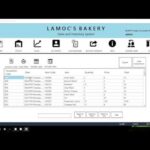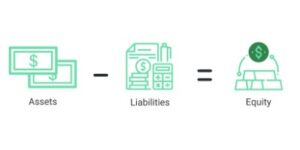
At the end, the difference between the account in QuickBooks and your bank statement should be US $ 0.00. For accounts connected to online banking, confirm that all transactions are accurately matched and categorized. To access the reconciliation tool in QuickBooks Online, navigate to Settings and then select Reconcile. By following these steps, you can reconcile in QuickBooks Desktop effectively and maintain petty cash accounting accurate financial records for your business. Additionally, reconciliation provides a clear audit trail, aiding in regulatory compliance and financial reporting requirements. Marking transactions as cleared in QuickBooks Desktop signifies the validation of these transactions against the bank statement, contributing to the accuracy of the reconciliation process.
Gather Bank Statement and Transactions
Rereconciling in QuickBooks involves the process of reviewing and revalidating previous reconciliations to address any discrepancies or updates in the financial records, ensuring ongoing accuracy. Through careful adjustments and verifications, the reconciliation process aims to provide a clear understanding of a company’s financial position. This meticulous approach helps in identifying and rectifying any irregularities, supporting informed decision-making and financial transparency. Gathering the bank statement and transactions is the initial step in reconciling a bank statement in QuickBooks, enabling the comprehensive matching of financial data with the official bank records. This phase is crucial as it ensures accuracy and integrity in financial reporting, aiding in identifying any discrepancies or errors that need to be resolved before finalizing the reconciliation process. Undeposited funds may arise from checks or payments that have been recorded in the system but haven’t been deposited in the bank.

This process involves meticulously comparing the transactions in QuickBooks what expense category is bookkeeping Online with the bank statements to identify any discrepancies. Look for discrepancies such as missing transactions, duplicate entries, or incorrect amounts. Entering the ending balance in QuickBooks Desktop is a critical step in the reconciliation process, ensuring that the financial records match the closing balance of the bank statement accurately. Reconciling in QuickBooks Desktop involves a set of structured procedures to ensure that the financial records accurately correspond with the bank statement, reflecting the precise financial position of the business. Entering the ending balance in QuickBooks Online is a crucial step in the reconciliation process, ensuring that the financial records align with the closing balance of the bank statement.
In this comprehensive guide, we’ll walk you through the step-by-step process of reconciling your accounts, including bank statements and balance sheet accounts. It is commonly used in banking (to reconcile a checkbook with a bank statement), in businesses (to reconcile revenue or expenses), and in personal finance management. It is crucial to ensure that all transactions have been properly recorded in QuickBooks Online to reflect an accurate financial position.
Make the necessary adjustments to the ending balance based on the findings and resolutions from the reconciliation process in QuickBooks Online, ensuring accuracy and integrity in financial records. Make the necessary adjustments to the beginning balance based on the findings and resolutions from the reconciliation process in QuickBooks Desktop, ensuring accuracy and integrity in financial records. When handling discrepancies between QuickBooks and your bank statements, start by comparing each transaction in QuickBooks against the bank statements to spot any differences.
To create a new transaction, open the Enter Credit Card Charges screen from the Banking menu. If you see a transaction in QuickBooks that isn’t on your credit card statement, don’t delete it. Any unmarked transaction this month will appear automatically in next month’s reconciliation.
How to Reconcile Balance Sheet Accounts in QuickBooks?
Reconciling in QuickBooks Online involves several key steps to ensure that the financial records align with the bank statement and reflect accurate transactional data. Integration of relevant keywords like financial accuracy, transaction history, bank statements, and potential errors will ensure a comprehensive understanding of the process. QuickBooks Desktop reconciliation is a crucial aspect of the accounting process, ensuring that the financial records within the software align with the actual financial transactions and statements. In the world of business, financial accuracy is the compass that guides decision-making.
How to reconcile accounts in QuickBooks Online
When matching transactions, it’s important to compare each entry on your bank statement with the corresponding records living amends scholarship in QuickBooks Online, paying close attention to dates and transaction details. If a transaction matches, mark it as reconciled by placing a checkmark next to its amount in QuickBooks Online. Transactions added or matched from online banking are usually pre-selected for convenience.
- If you don’t want to execute either of the two actions, click Cancel, and you’re done.
- Utilizing the various tools within the reconcile window, such as filters and search functions, further streamlines the process for a comprehensive reconciliation.
- You need to make sure the amounts match your real-life bank and credit card statements.
- This can be done by reviewing the transaction history and comparing entries to ensure that no duplications exist.
- This process is vital for maintaining the integrity of financial records and ensuring accurate reconciliation.
- Then, make the necessary changes to ensure the transaction details accurately reflect the actual transaction.
Step 3: Entering Statement Date and Ending Balance
If you don’t want to execute either of the two actions, click Cancel, and you’re done. To enter the ending balance, you should first navigate to the ‘Reconcile’ page and select the appropriate account. In cases involving significant or complex issues, it is recommended to seek the assistance of an accounting professional. If you want to reconcile in QuickBooks Desktop, this guide provides a detailed, step-by-step approach to help you through this process. You’ll also notice on the screen that there’s a Modify button, which allows you to change the amounts you entered in Step 1. However, this should be approached with caution, and it’s advisable to seek professional guidance if unsure.
By addressing any discrepancies in the beginning balance, businesses can enhance their financial reconciliation process, providing a clear and transparent view of their financial health. This meticulous approach helps in identifying and rectifying any errors or inconsistencies, ensuring that the records align with the actual financial activities. Reconciliation is an accounting process used to ensure that two sets of records (usually the balances of two accounts) are in agreement. It is a key step in establishing the accuracy of financial records and is often used to compare the records of a company with external records such as bank statements. This process typically begins by obtaining the bank statement and gathering all relevant transaction details from within QuickBooks Desktop. Any discrepancies should be thoroughly investigated and adjusted in QuickBooks to reconcile the balances accurately.
